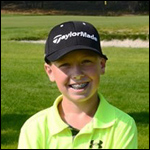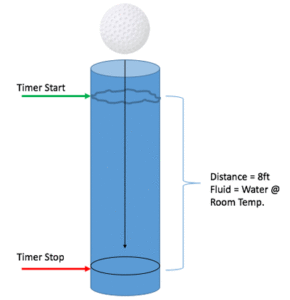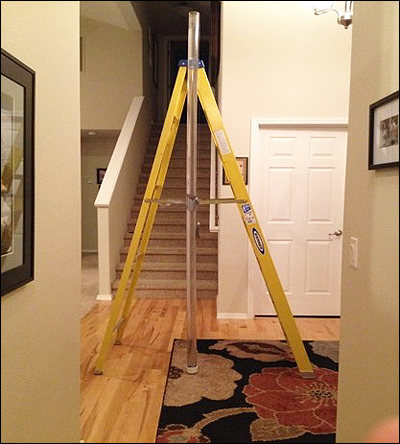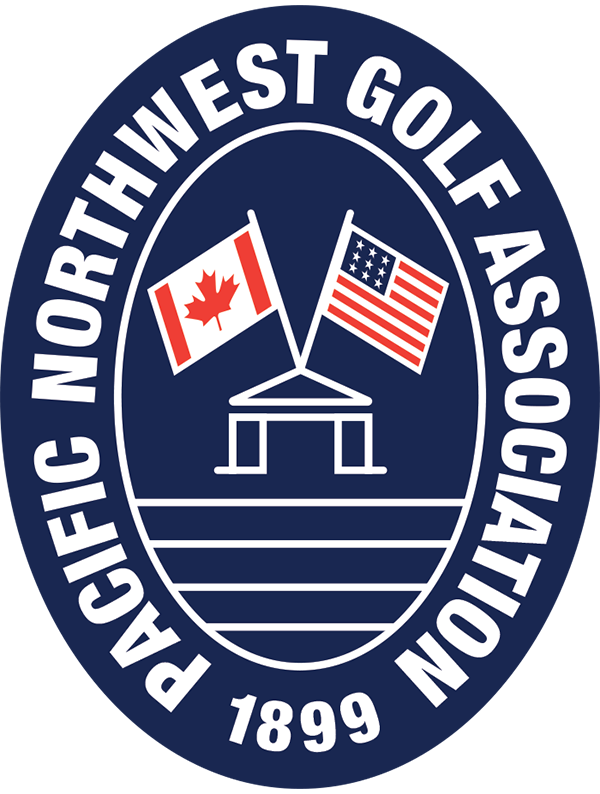Middle School Science Project Meets the Golf Ball
Breaking it down for you, one dimple at a time
by Hunter Eberhardt

What’s an interesting science project idea for an avid 13-year-old golfer? When I was assigned a large science presentation at my middle school, I cycled through several ideas before I realized that my golf game could actually benefit from the project! I’m always experimenting and looking for the perfect ball for my own game. Why not conduct an experiment on three of my favorite golf balls to find out which one can be proven superior?

When I step up to a golf ball and prepare to pound it 250 yards down the fairway, I never realized that upon impact, the golf ball is compressed up to one-fourth of its diameter. There is so much energy behind a golf swing that the golf ball would completely shatter if it didn’t absorb some of it. Even though all of that energy is present, without those little dimples on the golf ball, my massive 250-yard drive is going to rapidly diminish into a poor 150-yard breakfast ball.
There’s a surprising amount of science in the flight of a golf ball. George Cayley, the English pioneer of aerodynamics, developed four aerodynamic principles behind that 250-yard drive. His four principles – lift, thrust, drag and gravity – are some of the most important ideas in our world today.
Lift is the upward force on an object, acting against gravity. Thrust is the force that pushes an object through the air (in this case, a golf ball). Drag is the friction force acting on the golf ball, generated by the airflow over the surface of the ball. Gravity is the downward force on an object. It is because of gravity that things feel heavy. The overall force of lift and thrust must overcome the overall force of drag and gravity for an object to become airborne.
I designed my experiment to test which golf ball would travel fastest, and by association further, through a liquid. Water works to test ball flight because believe it or not, air is also a fluid. However, water is nearly a thousand times more dense, which magnified my results and made the experiment more measurable. In this experiment, effects of lift and thrust were eliminated, and only drag and gravity are in play.

My independent variable included three dimple patterns: Top-Flite D2 Feel, Callaway Chrome Soft, and Titleist ProV1. The experiment was set up using a clear plastic tube eight feet in length and two inches in diameter. I also used a ladder, pipe cap, stopwatch and retrieval apparatus.
After the tube was sealed on one end with the pipe cap, filled with water, and secured to an upright ladder, the experiment was ready to be conducted. One of the chosen dimple patterns was dropped into the tube and timed as it fell. As it reached the bottom, the timer was stopped and the results were recorded. This was repeated three times for each ball.
The Titleist golf ball proved superior by falling faster than its opponents by an average margin of just over a second. The runner-up to Titleist was Callaway, behind by .72 seconds. The Top-Flite was even farther from Titleist than Callaway was. It was 1.8 seconds behind.
This result can be explained by fluid dynamics and surface area. Surface area partially explains the strong performance of Titleist because the specific design of the Titleist golf ball has a smaller surface area than the competitors, which creates a lower overall drag force.
The result can also be explained by fluid dynamics because of the way the dimples change fluid flow around the object. Dimples help the fluid to “stick” to the golf ball farther around the diameter, which increases drag. Dimples also create a pressure difference between the front and back of the golf ball that increases lift and creates spin.
All other factors being equal, this means that the Titleist pattern provides the longer ball flight and potential distance improvement for golfers everywhere.
Hunter Eberhardt is an avid golfer from Boise, Idaho. He is looking forward to another summer season participating in the Idaho Junior Golf Association Tour. He will likely play a Titleist.





